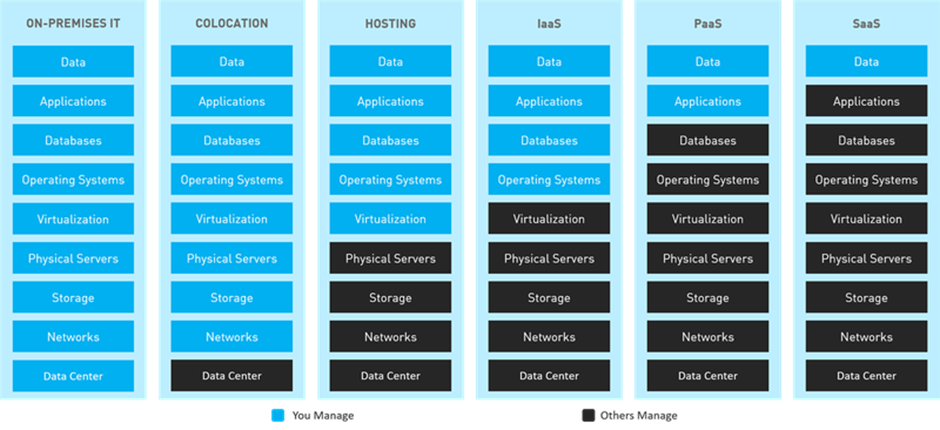Nearly all businesses depend on data for their operations. In any industry, access to real-time data is crucial for decision-making, identifying behavioral patterns, conducting root cause analysis, and more. As a business leader, you need to decide where to store this data: in the cloud or a local data center. Both options have their own advantages and disadvantages. To determine the best approach for your situation, you must carefully analyze the pros and cons of each option.
Clould Vs Data Center: Getting To Know Them
When it comes to data center, we usually refer to on-premise data center. Historically, all organizations used to build on-premise data centers(hereinafter, data center).. A data center can be a single server or a group of servers that you can purchase and keep within your organization for your data storage needs.
A data center encompasses everything from servers that support web and email to hardware that connects to the network, as well as infrastructure equipment that supports things like uninterruptible power supplies (UPS). Depending on the size of the organization, this could be a server closet or a large dedicated private data center, similar to those operated by large tech companies.
Data centers first appeared in the early 1940s when computer hardware was quite complex to operate and maintain. Early computer systems required many large components, which operators had to connect using a large number of cables. They consumed large amounts of electricity and required cooling to prevent overheating. To manage these computers, known as mainframes, companies usually housed all the hardware in a room called a data center. Each company invests in and maintains its own data center facility.
As technology evolved in the later part of the century, the rise of personal computing and networked systems provided opportunities to decentralize computing power. Modern data center design continues to evolve to optimize the management of IT complexity. Companies use data centers to store physical infrastructure in a central location that can be accessed from anywhere. With the advent of cloud computing, third-party companies are beginning to manage and maintain data centers and offer the infrastructure as a service to other organizations.
Cloud data centers, also known as cloud computing data centers, move traditional local data centers to remote locations. In a cloud-based solution, you store your data on other companies' hardware and infrastructure.
Most modern data centers (even on-premise ones) have evolved from traditional IT architectures, where each application or workload runs on its own dedicated hardware, to cloud architectures, where physical hardware resources such as CPUs, storage, and networks are virtualized. Virtualization enables these resources to be abstracted from their physical limitations and allocated in any amount needed to capacity that can be used for multiple applications and workloads.
Cloud Vs Data Center: What's The Difference?
Most companies choose cloud storage for two main reasons: reliability and scalability. Many worry about the idea of giving up so much control. In the chart below, we can see the main differences between the cloud and the data center.
Item | Data Center | Cloud |
Location | On-premises, physically accessible | Virtualized, remote hardware |
Management | Internal, business's responsibility | Outsourced to third-party provider |
Administration | In-house IT professionals | Employees of the service provider |
Reliability | Co-location makes failures dependent, onus is on the business for downtime and repairs | Provider is trusted to meet its promises of availability and reliability |
Pricing | Business pays directly for planning, people, hardware, software, and environment | Business pays per use, by resources provisioned |
Scalability | Possible, but involves challenges and delay | Completely, instantly scalable |
Notably, moving to a cloud data center does not mean moving everything to the cloud. Many businesses use hybrid cloud data centers that combine components from a local data center with components from a virtual data center. In the figure below, we observe a transformation in ownership and operation of on-premises data center and infrastructure elements, moving away from a wholly owned and operated facility towards a commodity service model known as "as-a-service."

Cloud Vs Data Center: Which Is Better For My Business?
Recently, many organizations have turned to the cloud for their infrastructure needs.CDCs(Cloud Data Centers) are a great option for small businesses that can provide the right computing resources without having to hire an IT team or manage expensive hardware. Large, rapidly scaling, and web-based organizations benefit from the efficiency, scalability, and IT expertise of cloud providers. Many organizations also find cloud computing useful as a disaster recovery tool, providing a reliable layer of redundancy.
However, a significant amount of infrastructure is still on-premise and managed by internal IT. Larger, older enterprises with unique use cases need to manage dependencies more carefully, and therefore often find that traditional data centers are still the right choice. Enterprises with high requirements for security and absolute ownership of data often need traditional data centers as well.
Ultimately, the choice may involve a hybrid approach where certain workloads are hosted in the cloud while others are managed locally. By using both a local data center and the cloud, organizations can collect the benefits of both while avoiding the drawbacks of each.
Conclusion
Overall, the choice of cloud or local data center depends on the unique needs, budget and technical capabilities of the business. Due to scalability and low cost, the cloud can be used for backups or additional storage, while mission-critical systems remain on-premise and fully owned by the organization. Certain tasks may run better on local infrastructure, while others are more effectively delegated to the cloud. Finally, with a hybrid solution, high-risk and confidential information can be reliably preserved while public data can be quickly processed and disseminated in the cloud. Whether pursuing the flexibility of the cloud or local control, organizations need to make informed choices on a case-by-case basis to ensure that their data center strategy is aligned with the digital future.


